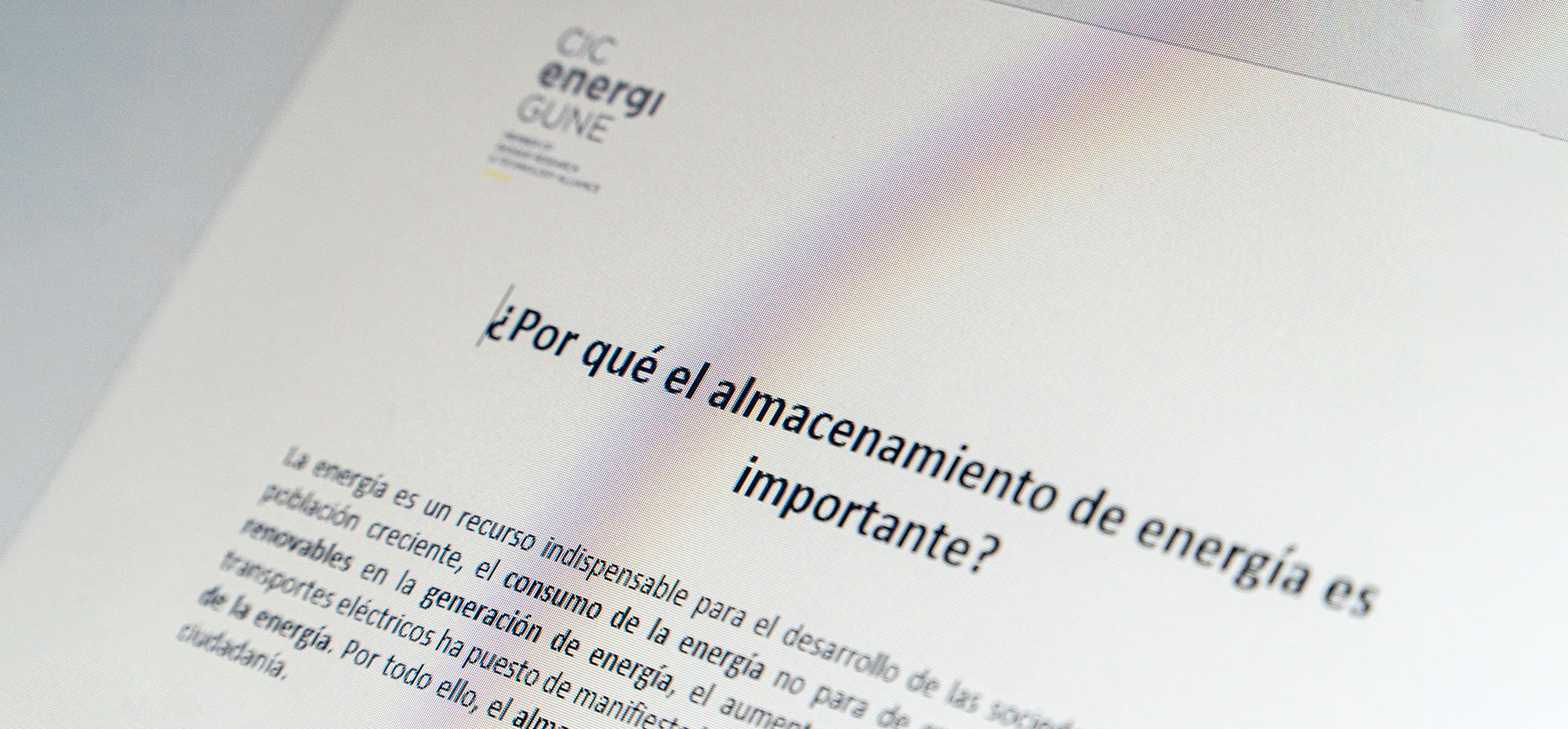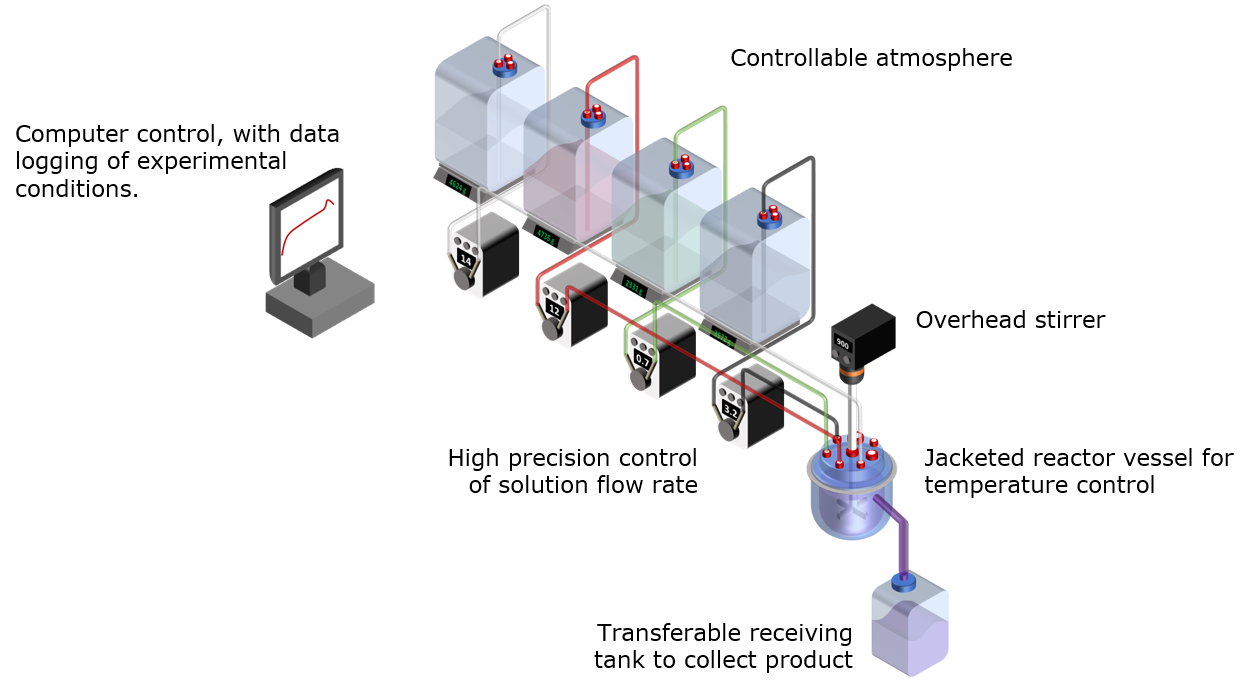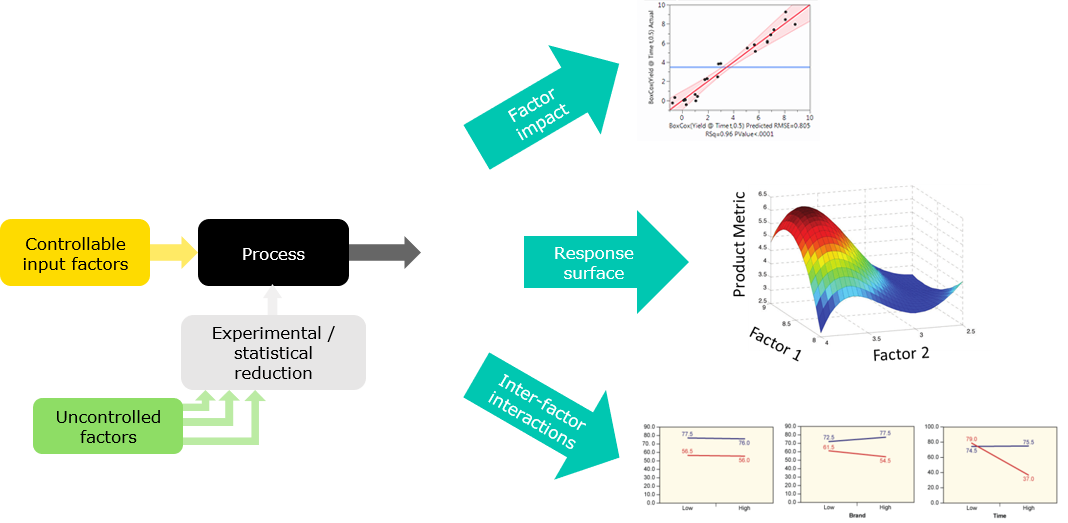During the research stage new materials are typically made and tested in gram quantities. Consequently, the consistency and performance of these materials when produced in the larger batch sizes (e.g. hundreds of grams to kilograms) required for developing to the prototype and industrial scale remains uncertain until the process has been fully developed.
This represents a significant issue in the road from fundamental research to potential commercialisation – particularly as, given the nature of the required time and resource investments, industry is typically wary of the risks associated with process scale-up for untested materials. As a result, many materials reported as having promising properties in the scientific literature remain at the research only level. Hence, scale-up of advanced battery materials represents a critical link between material discovery, market evaluation, and high-volume manufacturing.
To help address this roadblock, CIC energiGUNE is developing both scale-up facilities and know-how to not only transfer our own novel materials to the proof-of-concept level, but also to help industrial and research partners with their own synthesis processes.
Exploring a rich landscape: taking the first steps
For each cathode material there are a wide range of properties to optimise, such as how much energy it may store, how much and how quickly it can charge and discharge, how easily it may be processed into an electrode, as well as a multitude of synthesis conditions which may affect these both directly and indirectly. Synthesis conditions may also interact with each other (e.g. the optimal reactant concentration at one temperature may be different to that at another temperature). Increasing scale can also have unexpected consequences, for example, a slight exothermic reaction might be unnoticeable at the lab scale, but at a much larger scale might become so extreme as to lead to thermal runaway.
It can seem overwhelming when confronted by this complexity, and the task of finding optimal conditions for materials at scale daunting. However, by taking advantage of tools, techniques, and previously established knowledge, CIC energiGUNE is able to overcome these significant challenges.
Firstly, reproducibility is critical when trying to optimise processes – if there are significant variations between syntheses under supposedly the same conditions, it will be then very difficult when varying conditions to determine what has caused any observed changes. Steady-state production via continuous co-precipitation offers a potential solution, as this approach results in product properties (including primary and secondary particle sizes, morphology, size distribution, particle density, etc.) which remain constant during operation.
Thus, by using a precisely controlled continuous stirred tank reactor (CSTR) system (see Figure 1), combined with powerful analytical tools to benchmark all precursors (e.g. the starting solutions) and variations during the process (for example changes in product size distribution, pH, etc.), it is possible to ensure good reproducibility in properties and quality using a typically economically feasible and scalable method.










